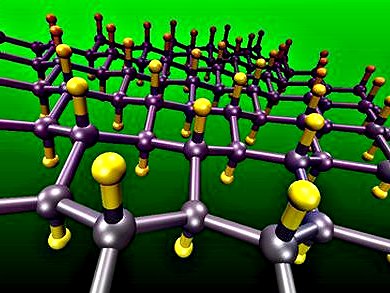Halogenation of sp2-planar carbon materials is of interest as the resulting halogenated graphenes show interesting electronic and electrochemical properties, such as an open bandgap and fast heterogeneous electron transfer (HET). Fast HET is of high importance for electrochemical devices such as sensors and solar cells. Although methods for graphite and graphene fluorination have been extensively researched, the fundamental electrochemical properties of fluorinated graphite are not well established.
Martin Pumera, Nanyang Technological University, Singapore, and colleagues have studied the electrochemistry of three fluorographite materials that are stoichiometrically well-defined, are commercially available, and do not contain additional functionalities, namely, (CF0.33)n, (CF0.47)n, and (CF0.75)n. The team found that the carbon-to-fluorine ratio of fluorographite impacts the electrochemical performance: Faster HET rates and lowered oxidation potentials for ascorbic acid and uric acid were progressively obtained with increasing fluorine content. (CF0.75)n, which possesses the highest fluorine content, thus yielded the fastest HET rates in [Fe(CN)6]4–/3– and Eu2+/3+ redox probes. (CF0.75)n also demonstrates the best distinction between oxidation peaks of ascorbic and uric acids and exhibits excellent linearity of responses towards the detection of these acids.
The fluorinated graphites show excellent properties relative to graphite and should find potential applications in sensing and biosensing.
- Fluorographites (CFx)n Exhibit Improved Heterogeneous Electron-Transfer Rates with Increasing Level of Fluorination: Towards the Sensing of Biomolecules,
Xinyi Chia, Adriano Ambrosi, Michal Otyepka, Radek Zbořil, Martin Pumera,
Chem. Eur. J. 2014.
DOI: 10.1002/chem.201402132



